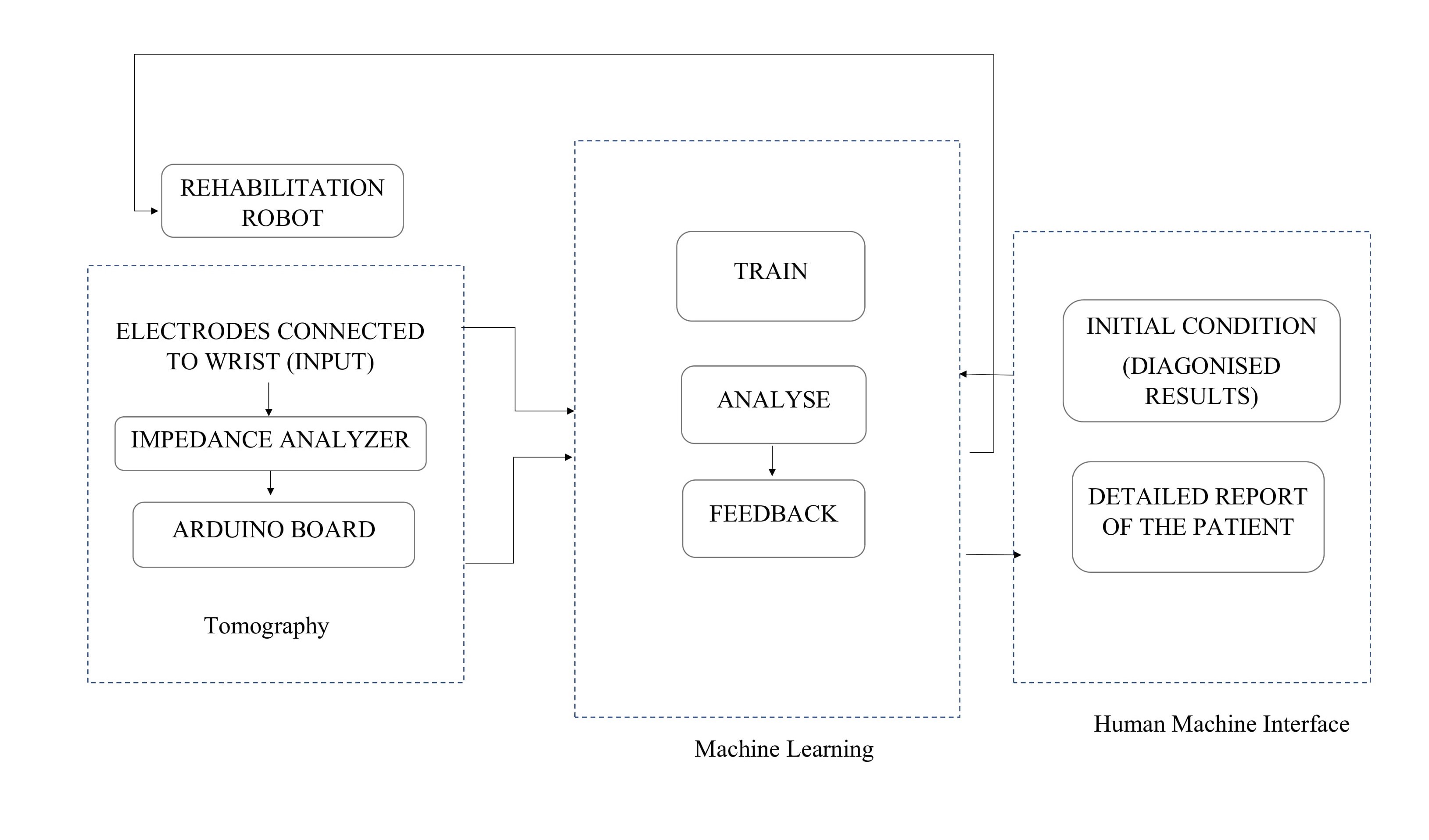RehabRobot- Intelligent Wrist and Forearm Therapy System: Understanding Bio-impedance Measurement using Tomography
The wrist and forearm are an integral part of our hand and arm movement. Injuries caused due to a fall or stroke could lead to acute trauma. It could be highly disruptive to daily life. Doctors generally recommend that the first six weeks from the period of stroke/accident, patients show faster signs of recovery. The long waiting period required to get an appointment causes inconvenience to patients and certainly miss to visit the rehabilitation centre at the earliest and loose the best time. The goal is to provide patients with a tool to take their exercises comfortably. This paper provides a concept that eliminates the requirement of the physical presence of a physiotherapist. Using the concept of tomography and artificial intelligence algorithms, a human-machine interaction system is created. The system consistently monitors human impedance value from the arm to make decisions. Also, a human can interact with the system using a simple User Interface (UI). Multiple experiments were conducted to define a relationship between hand movement and force exerted during the process. With the use of an impedance sensor, the compression and expansion of muscles were recorded. A pattern is detected between impedance value and position. It is complex to build a relationship between mechanical and electrical parameters. Therefore, with large datasets and machine learning algorithms, it is possible to generate relationships automatically. In this project, around 345,000 custom datasets were used for predicting bio-impedance with an accuracy of 94%. From the results, it is possible to predict the next move of the patient and helps to detect abnormal behaviour. Trial tests were conducted, and the typical response was comfortable and gentle. During the test, it was noticeable to see the acceptance of a robot for treatments. This paper proposes and proves a futuristic idea, how an autonomous system could change therapy. The process changes the way people interact and could be a first step on how artificial intelligence could be used in therapy. Index Terms—Impedance, Tomography, Therapy Robots, Artificial Intelligence.
According to the talks in the introduction, an HMI and tomography system could increase the performance of the system. Thus, the main aim of this research is to develop an HMI. For designing a beneficiary system, different methods of therapy system have been studied, and advantages and disadvantages are considered. This project focuses on developing a new method of HMI system using tomography. The figure shows the structure of a functional concept for a smart wrist and forearm therapy system. The available data produced by tomography, i.e., bioimpedance, is processed and used by a prediction algorithm to develop a relation between human movements and impedance value. The human movements are recorded from the existing onboard servomotor (Dynamixel XM540-270-T/R). A user interface developed for Windows PC that allows patients to access the robot and perform exercises efficiently. Moreover, all the patient’s data will be recorded on the PC and shared with doctors for future diagnoses.
